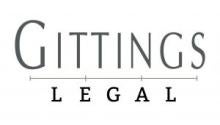How do you want your clients to see you? Skilled, competent, professional, and compassionate likely come to mind. That’s how everyone wants to be seen.
Your branding is about what sets you apart from the other skilled, competent, professional, and compassionate lawyers out there. No matter how good your firm is, no matter how much positive press coverage you generate, you can lose potential clients if your branding is bad or inconsistent.
Here's what you need to know about branding a law firm-and how to fix it.
Marketing vs. Branding: What’s the Distinction?
Many attorneys confuse marketing with branding. They think that if they invest in some search engine optimization and create a social media page, they have a brand strategy. Branding, however, is the information, symbols, and ideas that people immediately associate with your work.
The most successful lawyers and firms become synonymous with their brands: for Barry Scheck, it’s the Innocence Project. For Johnnie Cochran, it was O.J. Simpson. For the ACLU,
it’s a commitment to defending Constitutional rights even when the client isn’t very likeable.
So what’s your brand? Are you the family lawyer who offers controlled and effective representation that avoids igniting the angry fires of divorce? Are you the criminal defense
lawyer who only defends the innocent? Or are you the big firm that always makes the other side fight to prove their case?
No matter what values, clients, or message you want clients to associate with you, this information must be consistent across all platforms-- your website, marketing materials, social media page, even your communication with clients.
How Bad Branding can Cause you to lose cases and clients
Bad branding comes in at least two forms: generic or inconsistent branding and contradictory branding. Both can cost you cases. Consider the family lawyer who’s great at preventing a conflagration, resolving things in mediation, and protecting the well-being of families. If her website advertises an aggressive, scorched-earth approach, if it shows images of aggressive courtroom battles or fighting spouses, she’s not telling people the story of who she really is. That will cost her the clients who most need her services. It may also mean that clients who want an aggressive approach think she’s the right choice, and then end up firing her.
That same lawyer can also undermine herself if her website contains generic imagery of courtrooms and random lawyers. Clients who need an attorney who will protect their interests without causing needless fights will gloss over the page and move onto the next lawyer.
The ultimate lesson of branding is this: potential clients don’t know what you do. They only know what you tell them and show them. If what you show them is not reflective of your work, you’re losing clients, cases, and money.
Components of Good Branding
So what does good branding look like? That depends on the firm, the market, and practice area. Some practice areas are hyper-specialized and need extremely specific branding. Consider how saturated the personal injury market is, and how much work a personal injury lawyer must do to set them apart. An intellectual property lawyer faces an entirely different challenge: explaining what they do and why it’s necessary.
So to devise a branding strategy, ask yourself some simple questions:
- What are the competitive challenges in my market?
- What are the most common concerns I hear from potential clients?
- Who is my ideal client? What do they want, and how can I communicate that I offer that?
- Are there any strategies I’ve tried before that have brought in the wrong type of client?
- What positive feedback do I consistently hear from clients? From opposing counsel?
- How is my firm portrayed in the media?
Once you have an idea of your brand, you need to sculpt a public face that matches that brand. This includes social media posts and messages, blogs, a consistent website and logo, and how you talk to clients about their cases. Review the messages you’re sending into the world. Ask yourself if they are consistent with your brand. If not, they need to change.
The Role of Images in Branding
Photos are critical to first impressions. When people visit a website, professional profile, or social media page, their eyes naturally shift to the photos. If they don’t like the images, they may never bother reading the content. And the first impressions they glean from these photos really matter. One study found that people continue to judge people they’ve never met based solely on photos even six months later.
What do your photos say?
A photo is more than just a face to attach to a name. It conveys important information about your personality, about how you practice, and about what clients can expect when they call you. It can mean the difference between getting the next big client, and watching your competitor snap them up.




 i
i

